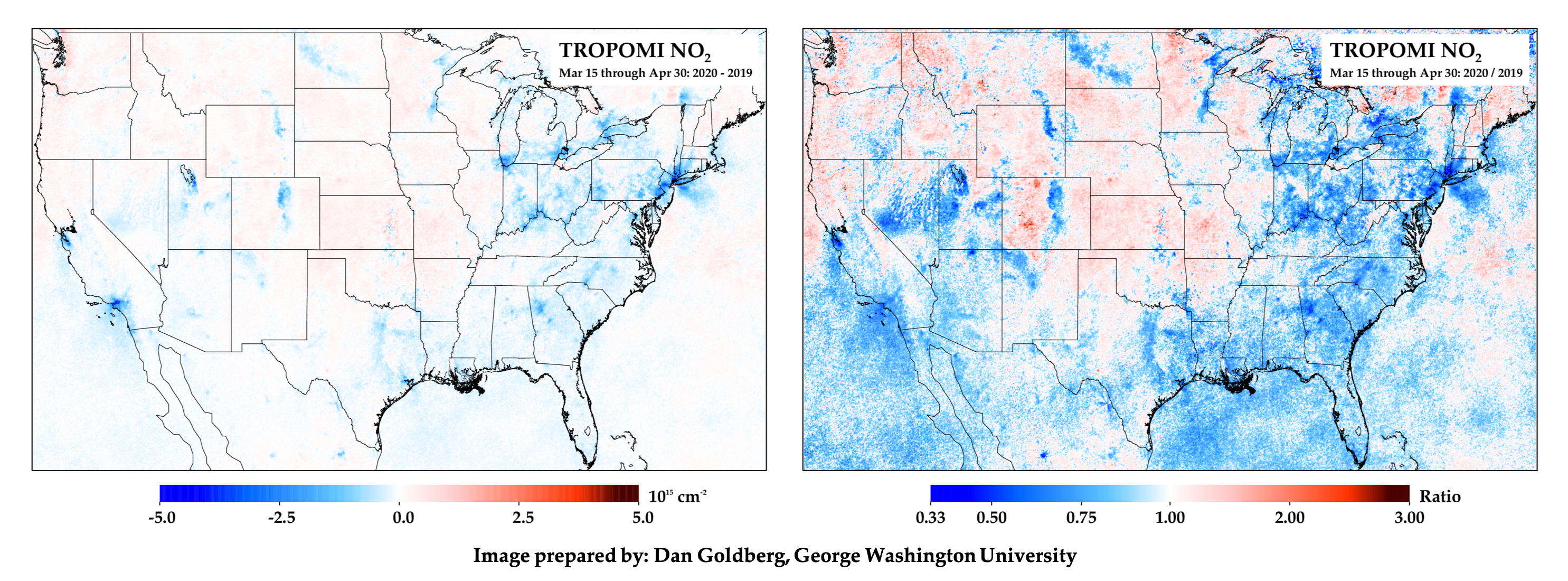WASHINGTON, DC (May 27. 2020) – The George Washington University Milken Institute School of Public Health (Milken Institute SPH) today announced a new grant from the National Aeronautics and Space Administration (NASA) to study the impact of COVID-19 social distancing measures on the air quality in cities around the world. The project, which NASA announced earlier this month, will evaluate how air pollution has changed after schools and business shut down in order to contain the spread of the virus.
The one-year grant allows the scientists to study data measured by NASA and European Space Agency satellite instruments and estimate the amount of air pollution, including tailpipe emissions after shut-down orders led to large reductions in traffic.
“Early research is showing that inhaling polluted air can make COVID-19 outcomes and other health conditions much worse,” said Susan Anenberg, PhD, an associate professor of environmental and occupational health at Milken Institute SPH. “Our study will give important information about the quality of the air in global cities after the COVID-19 lock downs.”
Anenberg and Daniel Goldberg, PhD, a research scientist at Milken Institute SPH, serve as co-principal investigators on the project. They are collaborating with analysts from the Argonne National Laboratory, NASA, the International Council on Clean Transportation, the Maryland Department of the Environment, and Environment and Climate Change Canada.
Satellite data showed large reductions in traffic-related air pollution after China and Northern Italy put in place strict shut-down rules. Yet, preliminary analysis by the researchers show that some United States cities have experienced less of a drop in such traffic-related pollution—despite stringent social distancing measures.
For example, Washington, DC, has experienced only a modest drop in nitrogen dioxide air pollution while Los Angeles has seen a more substantial decline during the lockdown timeframe.
“Air quality is impacted by a number of factors, including weather conditions and the types of vehicles on the road,” said Goldberg, adding that the team will disentangle the role of temperature, wind, sun angle and other factors affecting the amount of smog in the air.
The social distancing measures during the COVID-19 pandemic offer a natural experiment of sorts, one that will help researchers figure out what kinds of policies make a difference when it comes to cleaner air, Anenberg said.
For example, the study might find that the mix of vehicles on the roads is a key factor in air pollution. The lessons learned could spur policymakers to limit diesel-powered vehicles or require tough emission standards for trucks and other heavy-duty vehicles that emit lots of damaging pollution.
“For years to come, satellite data of air pollutants will likely be used to assess the impact of the pandemic on a range of human activities, including ones associated with the economy and climate gas emissions, around the globe,” said Bryan Duncan, PhD, a collaborator on this study and the Aura Mission project scientist at NASA. Duncan is also leading a complementary study, which involves Anenberg, to process and interpret satellite data of air pollution as a proxy for a change in human activity, in general.
Such information will be critically important not just during the ongoing COVID pandemic but over the long haul, the researchers say.
“Air pollution may contribute to higher fatality rates for COVID-19,” Anenberg said, adding that it can also trigger millions of serious asthma attacks and other potentially life-threatening health problems. “In the short run, this information is critically important as it will help public health officials warn people about exposure to unhealthy air, especially during a surge in COVID-19 cases.”
The study will also help policymakers find and put in place longer-term solutions for cleaner air once cities open up their economies.
“This research might point to greener forms of transportation or public policies that would lead to cleaner air, not just during the pandemic but for years to come,” Anenberg said.


